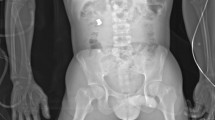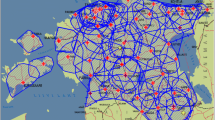Abstract
Background and Objectives: Gunshot injuries (GSI) were first reported in West Africa following the Nigerian civil war of 1967–1970. Recent wars within and around the West African subregion have further encouraged easy access to sophisticated and locally manufactured firearms. This report examines the epidemiology and management of GSI in an urban settlement in West Africa.
Patients and Methods: GSI data was collected prospectively for 24 months beginning September 1999: age, sex, velocity of gunshot, circumstances of GSI, whether accidental or intentional, and by whom (self-inflicted, police, armed robbers, and others via riots and/or students' secret cult activities), region(s) affected, operative interventions, and outcome of care.
Results: 107 GSI patients were seen, comprising 99 males and eight females (M : F ratio = 16.8 : 1), 79 of whom (73.8%) were analyzed comprising 71 males and eight females (M : F ratio = 9 : 1); mean age 29.9 ± 13.0 years (range 5–75 years). Intentional GSI occurred in 66 cases (83.6%) – 45 from armed robbers (57.0%), the others from police gunshots, assaults, religious/communal riots, and cultists. No suicide-related GSI were recorded. Accidental GSI occurred in 13 (16.5%) – eight from hunters and five from the police. 16 of the 79 (20.3%) were high-velocity gunshots. The regions affected were extremities 29 (35.7%), multiple regions 23, chest twelve, abdomen eight, head six, and neck one. 13 deaths (16.5%) occurred, all before surgical intervention – twelve in the emergency room because of late reporting and lack of blood transfusion. Ten of the deaths (76.9%) resulted from gunshots to either the chest or abdomen. 27 patients (34.2%) were successfully treated, eleven of whom had operations, while the majority (39 patients, 49.4%) was discharged against medical advice to traditional healers for bullet extraction.
Conclusion: Wars in West Africa have caused a high incidence of GSI in peace times through armed robbery. Suicide-related GSI is rare in Nigeria unlike in many developed countries. Only every fifth GSI is a result of a high-velocity gunshot. Mortality determinants are the region of GSI and injury-arrival time. The logistics in the emergency room leading to unacceptable deaths requires an overhaul. Half of GSI victims discharged themselves to native healers for extraction of pellets, portraying the beliefs of patients about GSI.
Similar content being viewed by others
Author information
Authors and Affiliations
Additional information
Received: December 31, 2002; revision accepted: February 20, 2003
Correspondence Address Babatunde A. Solagberu, MB, BS, FWACS (Ortho), FICS, Department of Surgery, University of Ilorin Teaching Hospital, P.O. Box 4377, 240001 Ilorin, Nigeria, Phone (+234/31) 22-6474, -2076 (ext 168, 241), Fax -0020, e-mail: basolagberu@yahoo.com
Rights and permissions
About this article
Cite this article
Solagberu, B. Epidemiology and Outcome of Gunshot Injuries in a Civilian Population in West Africa. Eur J Trauma 29, 92–96 (2003). https://doi.org/10.1007/s00068-003-1285-5
Issue Date:
DOI: https://doi.org/10.1007/s00068-003-1285-5




